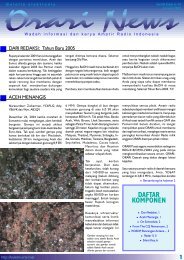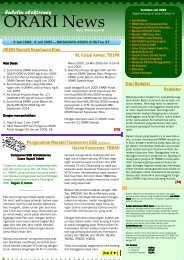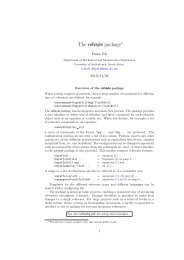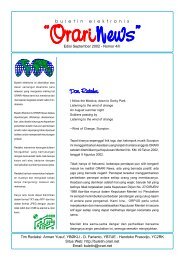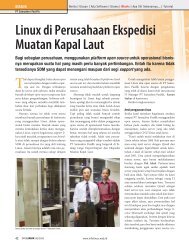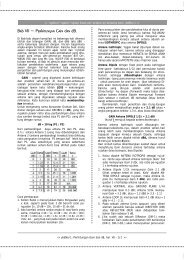You also want an ePaper? Increase the reach of your titles
YUMPU automatically turns print PDFs into web optimized ePapers that Google loves.
variation vs. frequency in some VHF and UHF applications. This<br />
effect is caused by absorption of some of the applied drive power<br />
by the low impedance heater coil at its resonant frequency. The<br />
distributed inductance from the heater coil to the cathode can, in<br />
effect become a helical resonator. The frequency of this resonance<br />
is typically in the high VHF to UHF range and is of relatively low<br />
Q, because of the fairly low resistance of the heater at operating<br />
temperature. A solution for this is to use rf chokes in both heater<br />
leads, with a capacitor connected across the heater to de-tune<br />
the resonance. The exact value of capacitance may need to be<br />
determined empirically. Looking for minute changes in the heater<br />
current with and without rf drive is a test for determining whether<br />
this is occurring.<br />
In the grounded grid configuration at HF with either a triode or<br />
tetrode having a cathode that is electrically separated from the<br />
heater (for example 4CX250B and 3CX1500A7 tubes), ferriteloaded<br />
chokes in the heater supply leads are sometimes employed,<br />
although not absolutely necessary. Even though the heater-tocathode<br />
capacitance is relatively low, there is a small reactance<br />
that can lead to stray rf if the leads are not well shielded. The use<br />
of heater chokes in this configuration becomes more necessary at<br />
VHF and UHF. Some designers “common mode” the heater and the<br />
cathode by bypassing these elements together to assure that the<br />
rf potential between them will be insignificant. This requires using<br />
rf chokes in all three leads; a trifilar choke could also be a solution.<br />
The maximum dc voltage rating between heater and cathode is in<br />
the range of only a few hundred volts in small tubes. One scenario<br />
should be examined, namely if anode voltage goes to ground.<br />
Referring to fig. 29, one would note that if Eb+ is grounded, the full<br />
potential Eb appears across the 20 Ohm resistor and the cathode<br />
voltage approaches the same potential as the anode supply, but<br />
negative in polarity. Stored energy in the Eb supply will be applied<br />
to the cathode end of the tube (although a filament type tube is<br />
illustrated) and cathode bypass capacitors, the cathode and grid<br />
current meter as well as the secondary windings of the heater<br />
transformer will receive considerable energy. Heater (and cathode)<br />
bypass capacitors should be protected from fault conditions of this<br />
nature by clamping the B- side of the anode supply to ground using<br />
diodes capable of handling high peak current. Devices such as<br />
Transorbs or Thyrectors are available and worth investigating also.<br />
The center tap of the heater supply transformer (if one is present)<br />
employed with oxide cathode tubes should not be grounded. See<br />
further discussion on fault protection in sec. 3.9.<br />
57




